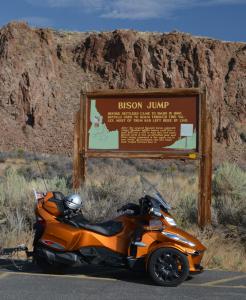OK guys, I watched the videos. They do answer one question I've had about laser alignment and that is how the rear wheel comes into play. I see now. The rear wheel is the best reference point available to use to establish where the laser beams need to be in order to be parallel to the frame of the Spyder. The front wheel track, i.e. the distance between the laser beams at the wheels, is used to determine how far from each side of the rear wheel the eventual target points need to be left and right. So we start by by securing the handlebar to keep the steering in a fixed position. Then move the Spyder back and forth a bit to relieve any binding in the steering as Lamont mentions in his video.
Looking at my sketch below locate the four targets at distance D1 from the front wheel centers. Then move them left and right until the laser points are on the zero target lines. Measure the distance between the target zero lines. Add F & R and divide by 2. That gives you T, the distance between the laser lines at the axis of the front wheels. From here follow the the procedure shown in the videos.
Laser sketch 001.jpg
As far as camber affecting the accuracy of the track distance by using laser points straight down, that is correct, strictly speaking. I suspect real practice has shown that that error is inconsequential in the overall scheme of the alignment process. In fact it's probably less than the errors caused by using ordinary tape measures handled by human hands! I'm sure ROLO wouldn't use lasers pointing straight down if it caused a significant error.







 Reply With Quote
Reply With Quote
